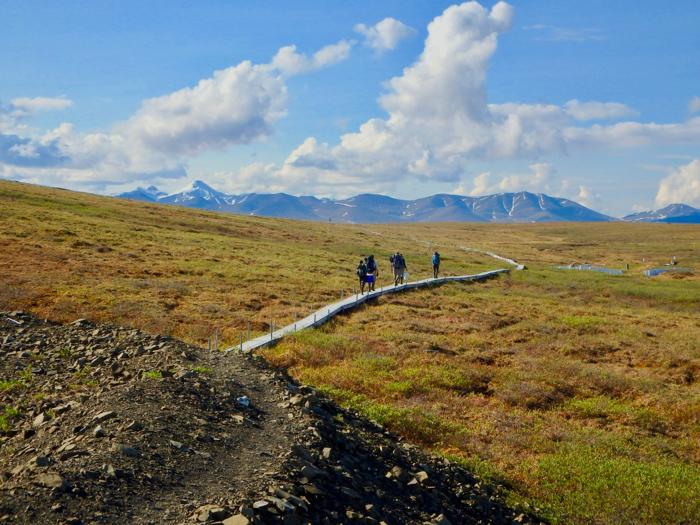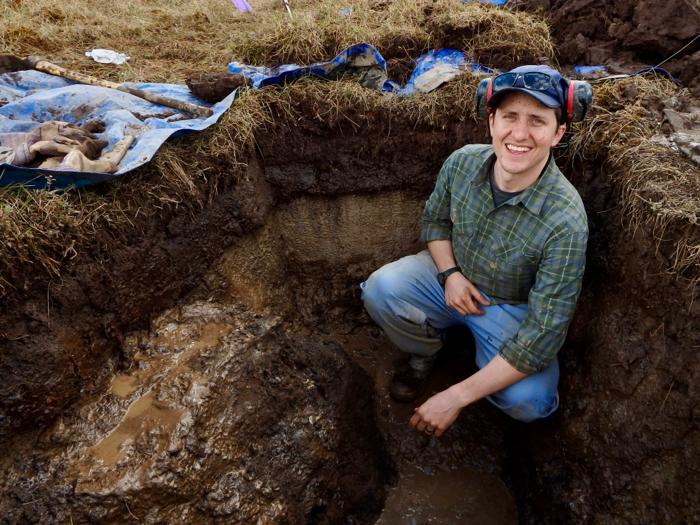Photo-Bio Part 1: Pit Digging and Sampling
North Slope, AK
June 8, 2019
Photo of the Day:
 The research group walks to the study site on the wet sedge tundra in the early morning. North Slope, AK.
The research group walks to the study site on the wet sedge tundra in the early morning. North Slope, AK.
As a preface to this entry, you’ll benefit from reading this overview of the summer photo-bio research I’m helping with. It gets pretty complicated, but pay attention to the key independent variables:
- Soil Type - Surface layer (organic mat) soil vs. permafrost
- Sunlight Exposure - Dark control vs. sunlight-exposed.
This post concerns the first step in the research process: the digging of pits in the wet sedge tundra and the sampling of surface layer (organic mat) soil and permafrost. Today, we dug the first of three pits. Here’s a time-lapse video of the pit digging and soil sampling, which took around 6 hours (I’m in the snazzy light blue rain pants):
Here’s a breakdown of this process into steps:
- Remove the mat of vegetation from the sample site in small squares, and carefully preserve them on a tarp. The below clip features Dr. George Kling and research technician Em Daily.
2. Remove the thin (around 8 cm) layer of thawed soil, exposing frozen soil. The below clip features Dr. George Kling.
3. With the help of a jackhammer, dig a pit in the frozen soil to a depth of 1.2 meters. This is what took the majority of time, as after each round with the jackhammer, we needed to remove all of the liberated frozen chucks of soil before continuing. In the below video, I take a crack at it.
4. Take samples of soil from the surface (organic mat) layer, 10-30 cm in depth. This is soil that proceeds through freeze-thaw annually. Store samples in a cooler, on ice. The below clip features graduate student Karl Romanowicz and Dr. George Kling.
5. Take samples of soil from the permafrost layer, 80-120 cm in depth, frozen for at least two years. Store samples in a cooler, on ice. The below clip features graduate student Karl Romanowicz.
After finishing sampling from a pit, we needed to fill back in all of the frozen soil, replace the top layer of thawed soil, and return the squared of vegetation, preserving their orientation. Here’s a time-lapse video of this process, which took around an hour (once again, I’m in the light blue pants):
Over the next two days, we will be repeating this process, for a total of three pits in the wet sedge tundra. It’s definitely a workout!
 Very proud of the shape and quality of this permafrost pit. North Slope, AK.
Very proud of the shape and quality of this permafrost pit. North Slope, AK.
Comment below!


Comments
Add new comment